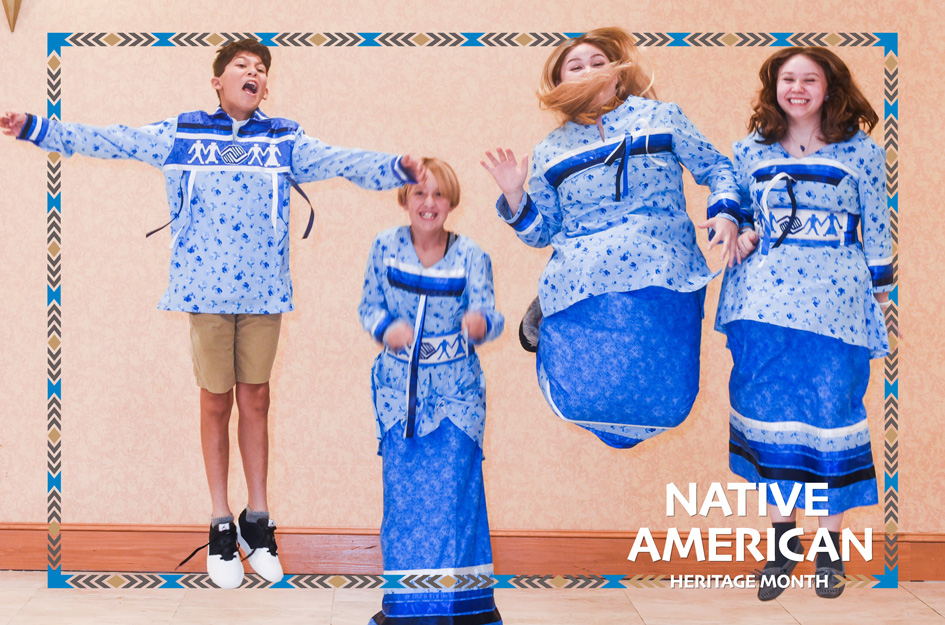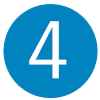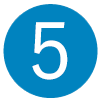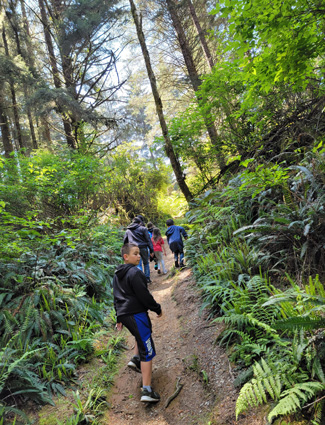
8 Ways to Celebrate Native American Heritage Month
Native American Heritage Month honors the diverse cultures and histories of Native and Indigenous people in the United States. There are many ways to celebrate this month with kids, from learning about different tribes to participating in activities.
Boys & Girls Clubs of America is proud to be the largest youth development services provider on Native lands. With nearly 250 Clubs serving over 120,000 Native kids and teens annually, we are committed to connecting Native people with their cultural heritage and identity while building skills to thrive in today’s world.
“Culturally, our historical trauma stays with us and is very real in present-day,” says Carla Knapp, Boys & Girls Clubs of America’s Vice President of Native Services and member of the Penobscot Indian Nation. “It is important that our nation understands this history. But it is also important that we, and especially our Native youth, understand that our story has always been one of incredible strength. Native people have battled the odds to overcome centuries of oppression, and to find ways to thrive and prosper. Yes, we know and believe that our communities deserve so much better. However, although there are economic and systemic challenges, our communities are rich — rich in culture, rich in family and rich in our love for this great nation we call Indian Country.”
When is Native American Heritage Month?
November is nationally recognized as Native American Heritage Month. Within the month of November, there’s also National Native American Heritage Day recognized on the 25th.
National Native American Heritage Month celebrates the cultures, traditions and contributions of Native people, across American Indian, Alaska Native, Native Hawaiian and American Samoan communities. This month raises awareness about the vibrant cultures and heritage of Native communities, uplifting the unique traditions and voices of tribes across the nation.

8 Ideas for Celebrating Native American Heritage Month

Explore what it’s like to be a Native young person today.
Often during heritage months, we look to history to learn about heritage. But a loose definition of heritage is “inheritance” — what is passed on to the next generation. Today’s Native youth show the complex journey of honoring ancestry and tradition while thriving in a 21st-Century world. Watch and read stories about what it’s like to grow up as a Native young person today:
- Modern Native experiences are depicted on TV like never before, with Indigenous writers bringing life to Native American-centered shows like “Reservation Dogs” and “Rutherford Falls”.
- What is it like not only growing up in the Redwoods, but depending on nature for the tribe’s well-being? Read how youth at this Native Boys & Girls Club are learning to connect with (and protect) nature.
- Traditional drumming and dance, rap songs and drones all have a home at this Native Boys & Girls Club, where staff help young people blend their modern interests with their Native identity.


Discover the Tribal land you’re living on right now and learn more.
There are over 500 federally recognized Native tribes in the United States, each with its own unique culture and history. A great way to focus your learning experience is to discover the Tribal territory you reside in by entering your zip code in the Native Lands interactive map. From there, you can learn more about their unique culture and traditions — from traditional Indigenous food that was grown in your region to how they lived.

Read children’s books about Native Americans this month and year-round.
Learning about different cultures helps young people’s empathy, respect and curiosity grow. And reading is a fun way to learn. Incorporate these great reads that are written and/or illustrated by Native Americans. Want to shop these books from an Indigenous-owned bookstore? Check out this list of sellers.
- “Fry Bread: A Native American Family Story” shares the complexity of Native identities through the post-colonial food, fry bread. Reading age: 2-6 years-old
- “Still this Love Goes On” features beautiful illustrations as it shares the enduring love of the Cree people for family, tradition and way of life. Reading age: 3-7 years-old
- “Berry Song” follows a girl and her grandmother as they gather berries from the forest, with themes of all that nature provides as well as the wisdom of Tribal elders. Reading age: 4-8 years-old

Take a virtual field trip to learn more about Native American tribes and cultures.
- Great for older kids, National Geographic has a multi-part Virtual Field Trip: Native American Stories on YouTube that shares three storytellers’ unique perspectives.
- The National Museum of the American Indian features a wide variety on online exhibitions that delve into topics like the importance of Indigenous dance, horses and how Tribal nations communicated.


Offer activities that honor Native American oral history, honoring elders and connecting with nature.
While every Native tribe is unique, certain values are important across Indigenous cultures. Kids from all cultures can understand how these values intersect with their own families and experiences.
- Oral history: Share the importance of oral traditions in Native cultures, where stories are told and passed on to preserve histories. Ask young people to think about the “oral histories” of their own families and share them or write them down.
- Honoring elders: Elders have a place of significance in Tribal society. Have young people draw, write about or interview an elder from their own family line. What wisdom, advice and stories would they want to capture from their family elder?
- Connecting with nature: A respect for and connection with nature is another universal Native American value. Bring young people outdoors, have them close their eyes and listen and observe all they hear and feel. Here’s what Boys & Girls Clubs of Yurok Tribe’s CEO Harold Jones says about this meditative practice:
“We do mindfulness exercises and meditation in the Redwoods. We sit in a circle and ask the kids to rest their eyes for several minutes. To imagine they’re a tree and grow roots and don’t think about anything. There’s a whole new vibe after the kids do that. They’re more grounded, connected. It’s like… look at what this place could give you.”
When young people learn about diverse cultures, they expand their worldview and deepen their empathy.
Year-round, Boys & Girls Clubs on Native lands work in partnership with their communities to reflect the distinct values and heritage of local Tribal traditions and culture. Our Native Clubs span coast-to-coast, and every Club is unique — from the tundra of Alaska to the desert of Arizona, from the coast of Maine to the islands of Hawaii. Each has their own story to tell. This Native American Heritage Month, join us in celebrating the strength and stories of all Native people.
Stay in the Know
Boys & Girls Clubs on Native Lands provide a safe, nurturing place where youth connect with mentors, build resilience and learn skills for a healthy and happy life. Sign up for our newsletter to receive the latest resources and stories from Boys & Girls Clubs of America.